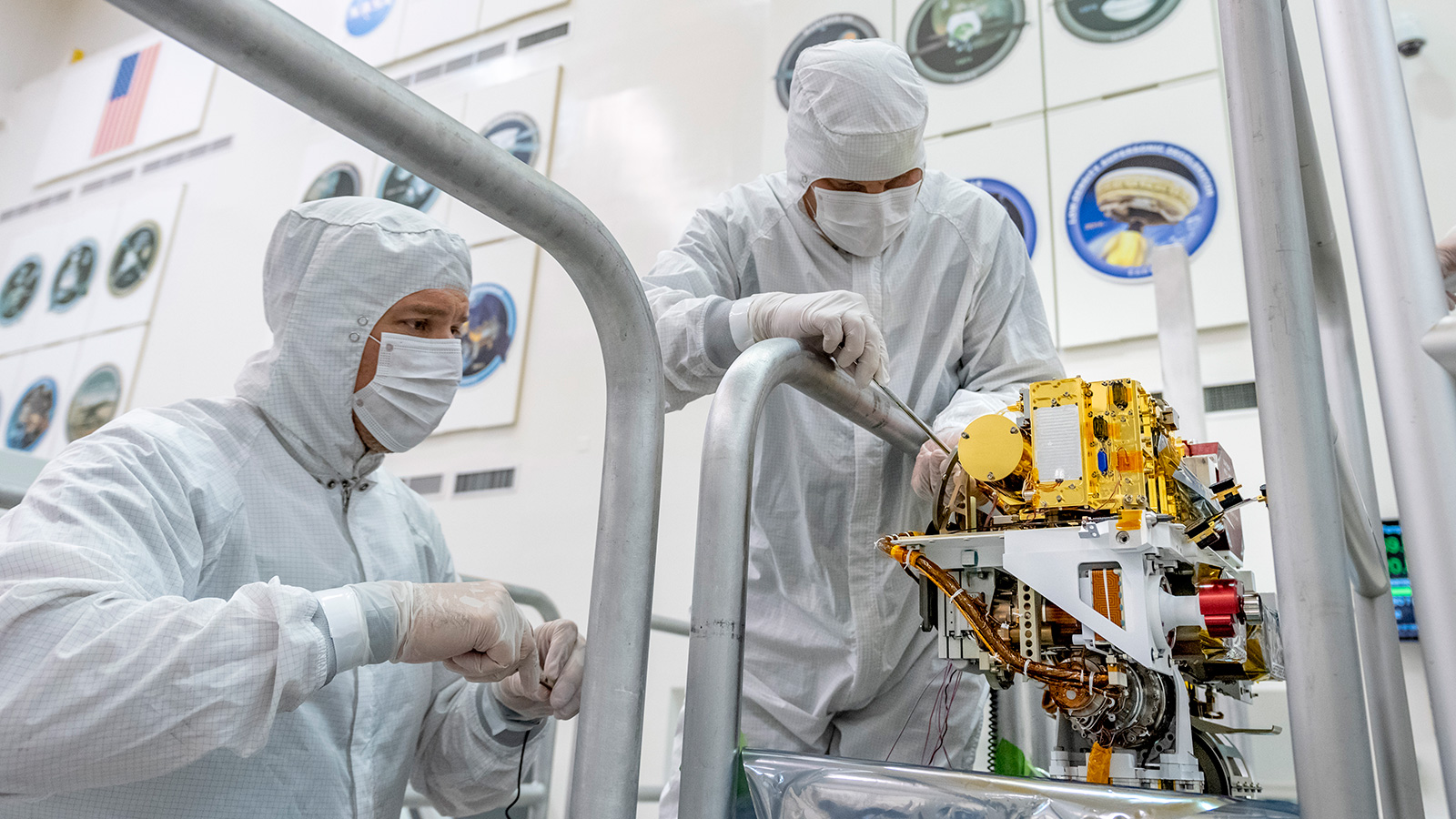
The Mars 2020 rover reached another milestone this week, when technicians installed its mast, the SuperCam Mast Unit. The rover already has its wheels and a robotic arm, and the next step was to add the mast.
The rover’s camera, laser, and spectrometers were installed as part of the mast unit, which is the central spire coming out of the middle of the rover and into the air, onto which instruments which require a longer view are placed. The cameras and other instruments included on the mast are capable of accurately identifying the chemical and mineral makeups of environmental targets from a distance. In fact, they can identify a target the size of a pencil point from a distance of more than 20 feet (6 meters).
“SuperCam’s rock-zapping laser allows scientists to analyze the chemical composition of its targets,” Soren Madsen, the payload development manager at JPL, explained in a statement. “It lets the Mars 2020 rover conduct its cutting-edge science from a distance.”
The suite of instruments is an updated version of the ChemCam aboard the Curiosity rover, which is used to image and examine objects from the Martian surface like rocks and other samples. The new SuperCam will perform the same tasks, analyzing rocks and soil, and in particular searching for organic compounds that could show if there was life on Mars at some point in the distant past.
The development of SuperCam was an international effort, with contributions from the U.S., France, and Spain. Construction of the last piece of hardware was completed in France before it was shipped to JPL’s facility in California for final assembly.
“SuperCam has come a long way from being a bold and ambitious idea to an actual instrument,” Sylvestre Maurice, the SuperCam deputy principal investigator at the Institut de Recherche en Astrophysique et Planétologie in Toulouse, France, said in the same statement. “While it still has a long way to go — all the way to Mars — this is a great day for not only SuperCam but the amazing consortium that put it together.”



